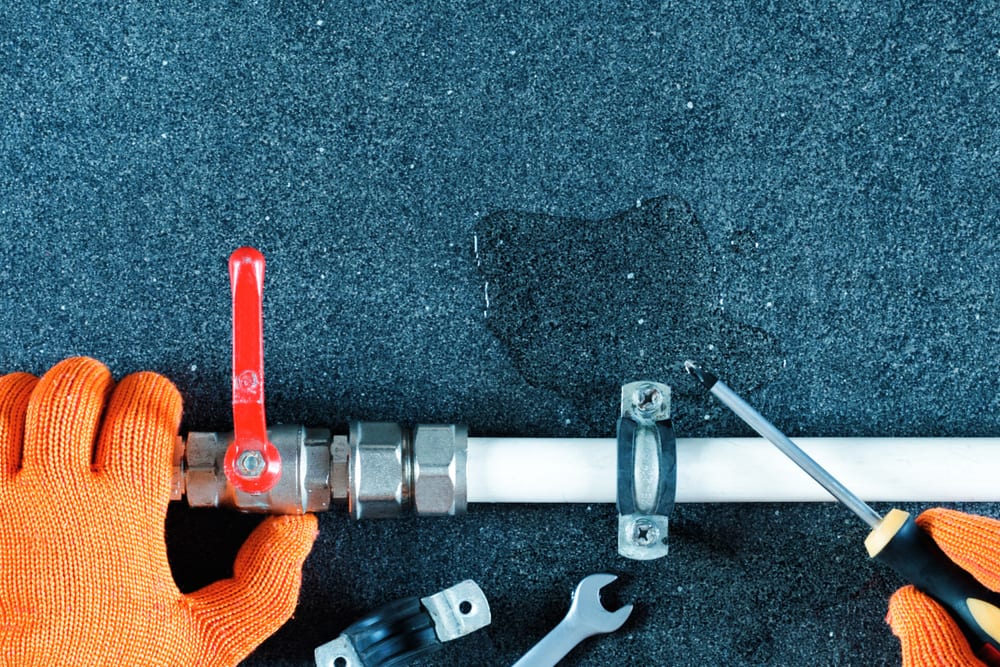Discover Concealed Water Line Leaks: 6 Tested Techniques for Detecting
Discover Concealed Water Line Leaks: 6 Tested Techniques for Detecting
Blog Article
Were you in search of guidance on Locating water leaks?

Early detection of leaking water lines can alleviate a possible disaster. Aside from saving you cash, it will certainly decrease the worry and stress. The minute you discover a leakage, calling your plumber for repair work is the best solution. Some small water leakages may not be noticeable. If you can not discover it with your nude eyes, right here are some hacks that aid.
1. Take A Look At the Water Meter
Examining it is a proven method that aids you discover leakages. If it moves, that suggests a fast-moving leak. This implies you might have a slow leakage that could also be below ground.
2. Inspect Water Intake
Evaluate your water expenses and also track your water consumption. As the one paying it, you must see if there are any inconsistencies. If you detect sudden changes, despite your consumption coinciding, it suggests that you have leakages in your plumbing system. Bear in mind, your water expense ought to fall under the same array every month. An abrupt spike in your expense suggests a fast-moving leakage.
A constant increase every month, also with the very same practices, shows you have a slow-moving leakage that's also slowly escalating. Call a plumber to completely inspect your home, particularly if you really feel a cozy location on your floor with piping beneath.
3. Do a Food Coloring Test
When it comes to water usage, 30% comes from commodes. If the color somehow infiltrates your dish throughout that time without flushing, there's a leakage in between the container and dish.
4. Asses Outside Lines
Don't forget to examine your outside water lines too. Needs to water leak out of the connection, you have a loosened rubber gasket. One tiny leakage can squander loads of water and also surge your water costs.
5. Check and Assess the Circumstance
Home owners must make it a practice to inspect under the sink counters as well as also inside cupboards for any type of bad odor or mold growth. These two red flags indicate a leakage so punctual focus is needed. Doing regular inspections, even bi-annually, can save you from a major issue.
Extra importantly, if you know your home is already old, keep a watchful eye on your heaters, hoses, pipes etc. Check for stainings as well as deteriorating as many pipelines as well as appliances have a life span. They will additionally naturally degrade due to tear and also wear. Don't wait for it to intensify if you believe dripping water lines in your plumbing system. Call a specialist plumber right away so you don't end up with a dreadful mess in your home.
Early detection of dripping water lines can alleviate a possible disaster. Some small water leaks may not be visible. Inspecting it is a guaranteed means that aids you uncover leakages. One little leakage can lose tons of water as well as spike your water bill.
If you believe leaking water lines in your plumbing system, don't wait for it to escalate.
How to Know If Your Home Has a Hidden Leak
Water Meter Reveals Inexplicable Water Usage
If you’d like to test whether or not there’s a leak somewhere in your home, you can do this using your water meter. Here is how to conduct the test:
Don’t use any water in your home for at least 30 minutes; this also means not turning on faucets or water-using appliances.
Go outside, and check your water meter for activity.
If your water meter shows that there was activity, even though no one was using any water, this proves that there is a leak in your home.Visible Mold or Mildew Growth
Leaks behind walls create moist, dark environments that allow mold and mildew to grow and thrive. Eventually, you might see mold growth forming on the wall closest to a hidden leak.
If mold is growing in an area that receives a high amount of moisture, such as a bathroom, it may simply be an indication that better ventilation is needed. However, if you see mold growth on a wall or the ceiling in an area where you would not expect, you probably have a hidden leak.
Musty, Mildew Odor
Sometimes you might not be able to see the mold or mildew that is growing as a result of a leak. However, the smell can give the problem away just as easily. If you catch a whiff of something musty, there’s a good chance that old water is collecting somewhere in your home that you can’t see.
Stained/Warped Walls, Ceilings, or Floors
When your home soaks up water, a variety of red flags can become visible, including ceiling stains, bubbling drywall, warped walls, and sagging floors. While these issues can be caused by excess humidity, they can also be signs that a pipe or plumbing connection has started leaking behind your walls.
Inexplicably High Water Bill
After a while, you get a general sense for what your water bill should be. If you own a pool or sprinkler system, your bill will tend to be higher during summer. However, if you receive a water bill that seems especially high, and you can’t figure out what caused it, then you may have a hidden leak somewhere that’s increasing your bill.
https://www.plumbingjoint.com/blog/2019/july/how-to-know-if-your-home-has-a-hidden-leak/

Do you like more info about Finding hidden leaks? Write feedback down below. We will be interested to see your feelings about this review. We hope that you visit us again before long. Enjoyed reading our write-up? Please share it. Help somebody else discover it. Thank-you for your time spent reading it.
More Details Report this page